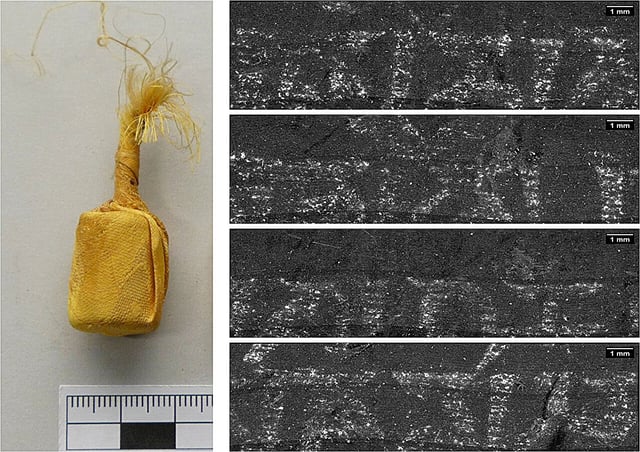Overview
- Researchers used high-resolution 3D X-ray tomography at the Federal Institute for Materials Research and Testing’s BAMline at BESSY II to non-invasively scan the silk-wrapped scrolls.
- A mathematical algorithm from the Konrad Zuse Institute, enhanced with AI-powered Amira software, virtually unrolled the 80-centimeter parchment wound over 50 times.
- Digital analysis revealed the Sanskrit-grammatical Tibetan text of 'Om mani padme hum' and detected metal particles in the ink rather than the traditional soot-based formula.
- The scrolls were housed in a gungervaa shrine used by nomadic Buddhists until Soviet-backed suppression in the 1921–1930 Mongolian revolution dispersed its contents into Berlin’s Ethnological Museum.
- The restored gungervaa shrine and its digitized dharani are on free display at Berlin’s Humboldt Forum until June 1, 2026, with plans to exhibit the artifacts in Mongolia afterward.
